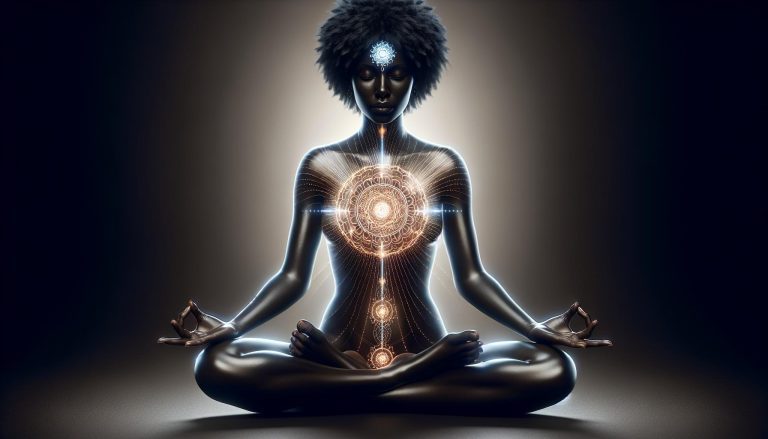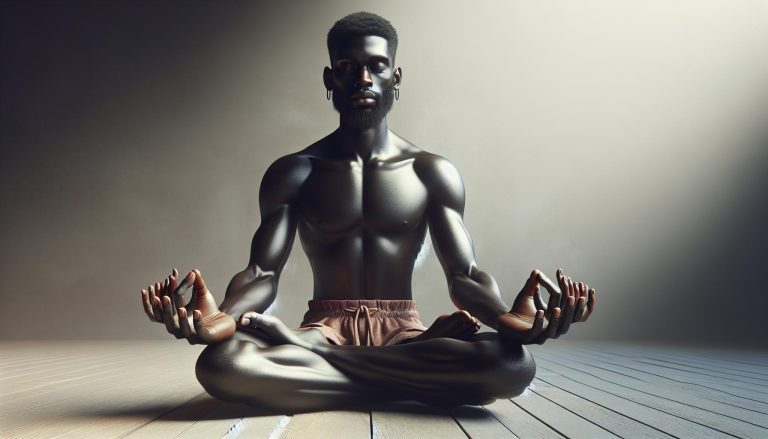Buddhist Mantras to Ease Pain: Find Relief & Healing
Struggling with pain can feel like a never-ending battle, but what if the relief you’re seeking lies in ancient wisdom? Buddhist mantras have been used for centuries as a tool for healing the body and mind. They’re more than just phrases; they’re a form of meditation that can transform your pain management routine.
Imagine chanting a sequence of sacred sounds that tap into the power of your mind to alleviate physical discomfort. It’s not just about belief; science is beginning to uncover how these mantras can influence your pain perception. Get ready to explore a holistic approach to pain relief that could change the way you cope with chronic pain.
The Power of Buddhist Mantras
Ever wondered why people keep returning to ancient practices for wellness? Buddhist mantras, for instance, stand out as a significant spiritual tool for healing. Chanting these mantras isn’t about ritualistic singing; it’s embracing a vibration that affects your entire being. You’re not just reciting words; you’re engaging in a healing process.
Your mind, often cluttered with relentless thoughts, finds a reprieve when you focus on the repeated cadence of mantras. Think of it as sound therapy, with each syllable designed to resonate through your body, aligning your inner workings towards peace and comfort. The right mantra can shift your attention away from pain, enveloping you in a soothing auditory blanket.
Researchers have noticed a trend: people who integrate mantras into their daily routine experience notable improvements in dealing with discomfort. Imagine transforming your pain management routine through a practice as simple as mantra meditation. It’s not a stretch; it’s becoming a tangible benefit observed by both practitioners and scientists.
Consider this: stress exacerbates pain. Mantras help in stress reduction, directly influencing your pain experience. By regularly chanting, you can initiate a relaxation response, a state where your body can potentially reduce pain intensity.
It’s not just about the psychological aspect; your nervous system takes a cue as well. Neurological patterns that dictate pain perception can actually alter when you immerse yourself in mantra chanting. This isn’t conjecture; it’s grounded in the evolving understanding of how the brain processes pain.
Mantras might seem like mere phrases, but to those who use them for pain relief, they are much more. They become a source of strength and serenity in the face of chronic pain. And while science continues to uncover the layers to this practice, countless individuals have already woven mantras into the fabric of their lives.
Embracing the practice requires no special tools—just your voice and a willingness to try. If you’re looking for a non-invasive way to manage pain and enhance your mental wellbeing, turning to Buddhist mantras could be a step in a transformative direction.
Understanding the Science behind Mantras for Pain Relief

When you recite Buddhist mantras, you’re not simply muttering words; you’re engaging your entire being in a resonant experience. This vibrational practice directly interacts with your body’s pain processing mechanisms.
Studies show that repetitive sounds, like those found in mantra chanting, can have a profound effect on the brain. These sounds impact the limbic system, the part of the brain that governs emotions and behavior. Regulating the limbic system can influence your body’s stress response, which is closely tied to pain perception.
Think about the “fight or flight” response your body has in stressful situations. Your heart rate goes up, muscles tense, and overall, your sensitivity to pain can increase. Mantras can help flip the switch to a more relaxed state where pain is perceived less intensely.
Here’s what’s happening when you chant:
- The rhythmic nature of mantras can lead to a meditative state, reducing stress and promoting relaxation.
- Mantra chanting can stimulate the release of endorphins, the body’s natural painkillers.
- Sound vibrations may enhance neural synchronization, leading to improved stress resilience and reduced pain sensations.
Researchers point to the importance of both a mantra’s sound and its associated meaning. While the sound works on a vibrational level, the meaning imbues the practice with a deeper, spiritual dimension that enhances the healing process.
When you integrate mantras into your daily routine, they act as a tool for both mindfulness and physiological alteration, making them a dual-force against discomfort. Keep in mind that the benefits can accumulate over time; regular practice is often necessary to see significant changes in pain levels.
Consistency is key, and so is patience. As with any pain management technique, results can vary, but the low-risk nature of mantra chanting makes it a worthy consideration for those seeking relief.
Here’s a quick breakdown:
| Benefit | Mechanism |
|---|---|
| Reduced Stress | Limbic system regulation |
| Decreased Pain Sensation | Endorphin release and neural synchronization |
| Increased Relaxation | Contribution to meditative state |
The transformative power of these ancient sounds continues to support countless individuals in not just managing pain, but also in finding peace and strength within.
How Mantras Influence Pain Perception

When you’re dealing with constant pain, finding relief is a top priority. Ever wonder how something as simple as a mantra could make a difference? Let’s get into it.
Mantras have been used for centuries as a method to calm the mind and, surprisingly, they have a profound effect on how you perceive pain. The secret lies in their ability to modify brain function. When you continuously repeat a mantra, it activates certain regions of your brain—those that are tied to emotional regulation and the perception of pain.
This engagement with the brain creates a fascinating ripple effect. Thanks to the brain’s neuroplasticity—its ability to reorganize itself by forming new neural connections—mantras can actually rewire your brain over time. This means that with regular use, you might not just be distracting yourself from the pain momentarily but changing the way your brain processes it.
It’s like training a muscle; the more you use it, the stronger it gets. In this case, your ‘pain tolerance muscle’ gets a workout every time you dive into mantra chanting.
Sounds kind of out there, right? But there’s science to back it up. Here are some of the ways that this simple practice can take your pain down a notch or two:
- Calms the Mind: Mantras can induce a meditative state which helps settle down the flurry of thoughts that might amplify your pain.
- Releases Endorphins: The body’s natural painkillers, endorphins, are released during the relaxation response that comes with chanting.
- Improves Focus: Regularly focusing on mantra chanting helps train your brain to focus on things other than pain.
All in all, mantra chanting isn’t just an old-school spiritual practice—it’s got some serious modern-day health benefits. Including it in your daily routine might just be the key to managing that nagging discomfort. Why not give it a try and see how it changes things for you?
Incorporating Mantras into Your Pain Management Routine

Integrating mantras into your daily life doesn’t need to be complicated. Think of it as adding a new tool to your wellness kit—a tool that’s been backed by centuries of tradition and modern research. Here’s how to get started:
Start Simple
Choose a mantra that resonates with you. For pain relief, traditional Buddhist mantras like “Om Mani Padme Hum” can be profoundly soothing. Get comfortable with the sounds and the rhythm of the words before folding them into your daily habits.
Establish a Routine
Consistency will amplify the benefits of your practice. Set aside a few minutes each day, perhaps each morning or before bed, to chant your chosen mantra. Over time, this practice will become a natural part of your pain management strategy.
Create a Comfortable Space
Designate a peaceful spot in your home where you can sit undisturbed. A calming environment will enhance your focus and the effectiveness of the mantra. You might want to include items such as:
- Cushions for comfort
- Candles for soft lighting
- Incense for aromatic calm
Combine with Breathwork
Incorporating breathwork can intensify the effects of mantra chanting. Sync your chanting with deep, controlled breaths to help regulate your body’s stress response and possibly lessen the sensation of pain.
Utilize Audio Aids
If you’re a beginner or prefer guided sessions, use recordings or apps that offer mantra chanting. Hearing the mantra chanted by experienced practitioners can help you learn the proper pronunciation and cadence.
Be Patient and Persistent
It takes time for new habits to form. Don’t be discouraged if you don’t notice immediate results. Patience and persistence are key as your body and mind adapt to the healing rhythms of mantra chanting.
Each step builds upon the next, solidifying a pain management practice that’s both holistic and personal. Whether you’re a seasoned practitioner or just starting out, the addition of mantras into your routine has the potential to bolster your resilience against discomfort and pain.
Exploring Different Buddhist Mantras for Pain Relief

When you’re dealing with persistent pain, finding relief is a top priority. Buddhist mantras, often used for meditation and healing, can be powerful tools in your pain management arsenal. They’re not just words or sounds; they carry a vibrational quality that may impact your physical and emotional well-being.
Om Mani Padme Hum, perhaps the most renowned Buddhist mantra, is said to invoke the powerful benevolent attention and blessings of Chenrezig, the embodiment of compassion. Chanting this mantra with the intention of releasing pain can be soothing and might assist in easing discomfort.
Another meaningful mantra is Tayata Om Bekanze Bekanze Maha Bekanze Radza Samudgate Soha. It’s linked to the Medicine Buddha and it’s believed to be incredibly potent for healing. People often recite this mantra when they or someone they know is struggling with health issues.
Om Tare Tuttare Ture Soha, the mantra of Green Tara, a compassionate bodhisattva, helps cut through the intensity of physical and mental pain. This mantra’s rhythm and repetition can work as a form of sound therapy, possibly altering your perception of pain.
Consider integrating these mantras into your pain management plan:
- Find one that resonates with you and feels right for your situation.
- Incorporate them into your daily meditation or mindfulness practices.
- Take deep breaths and focus on the sound and vibration of the words.
Remember, consistency is key. Regular practice of these mantras could nurture a peaceful state of mind and diminish the power pain holds over your life. Give them a try, and see if they bring the relief you’ve been seeking. With patience and persistence, you may notice a shift in your pain levels and overall outlook.
Conclusion
Embracing Buddhist mantras could be a transformative addition to your pain management routine. By choosing a mantra that resonates with you and weaving it into your daily practices, you’re inviting a sense of peace and healing into your life. Remember, the key is consistency and patience as you allow the soothing vibrations and sounds to work their magic. Give yourself the gift of these ancient chants and you might just find a powerful ally in your journey towards comfort and wellness.







